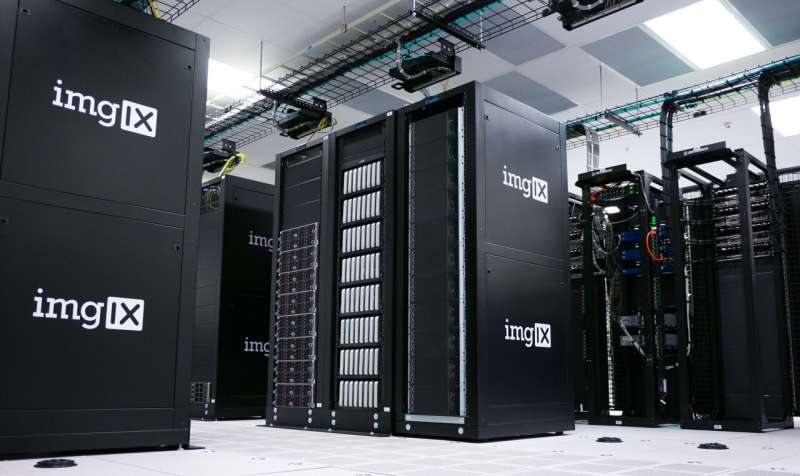Are US data centers fueling climate change? The best (and worst) regions for clean energy

Do you have a data center near you? Are you aware of how bad it might be for your surroundings and for the environment?
It turns out that in America, the best areas to have data centers might be on the West Coast, according to a new study by Cirrus Nexus, a cloud management platform. The study was conducted during a week in June.
California and the Pacific Northwest are the “cleanest” regions due to their use of renewable energy. However, the study sees the Midwest as “persistently dirty” due to the region’s top two sources of energy producers, coal and natural gas.
Also, a big state like Texas is somewhere in the middle due to its use of natural gas and wind along with a mix of solar and nuclear energies.
“As consumer demand for technology increases, the demand for power to run those applications and devices also increases,” Cirrus Nexus CEO and co-founder Chris Noble told U.S. TODAY. “There isn’t a perfect solution to solve this.”
President Joe Biden last week signed the monumental Inflation Reduction Act, which the U.S. hopes to use to help combat climate change.
The historic $369 billion law reportedly will spend tens of billions of dollars on lowering greenhouse gas emissions, supporting renewable energy development and spotlighting communities near polluting industries.
“Providing incentives for clean energy production, more efficient transmission of power between regions and the ability to store energy more efficiently is a positive step forward,” Noble said. “The Inflation Reduction Act incentivizes the development of technologies for storing energy locally during non-peak times from clean, renewable energy sources, and as a result, will drastically reduce the reliance on CO2-emitting power generation during peak times.”
What is a data center?
A data center is a facility that centralizes an organization’s shared information technology operations and equipment for the purposes of storing, processing and disseminating data and applications, according to Palo Alto Networks.
In addition to storing a massive amount of info on drives, data centers are crucial to an organization’s daily operations because the security and reliability of data centers and the information they protect are top priorities for companies.
Data centers are usually housed in nondescript buildings with several servers that help keep people browsing on their smartphones, laptops and computers powered up via tons of information that takes up enormous amounts of energy in various forms.
Data centers use about 10 to 50 times the energy per floor space of a typical commercial office building, according to the U.S. Office of Energy Efficiency and Renewal Energy.
The spaces use around 2% of America’s electricity, the energy department said, adding that as the nation’s use of IT continues to grow, data center and server energy use are expected to increase.
Do data centers emit pollution?
Data centers consume approximately 200 terawatt-hours of electricity, or about 1% of global electricity demand, contributing to 0.3% of all global carbon dioxide emissions, according to the International Energy Agency.
Noble said he is concerned that the demand will increase sooner. He cites Canadian professor and researcher Lofti Belkhir, who has predicted a roughly tenfold increase in the share of global greenhouse gas emissions from data centers by 2040.
“We are currently at a pace where our technological demands by 2040 will far surpass what we already consume today,” Noble said.
What’s the cleanest data region?
In this case, California and the Northwest were the cleanest data center regions, the study said, but both fluctuate because of changes in renewable energy production. In California, solar energy peaked at 57% of energy production during the day with natural gas primarily making up the shortfalls, the study said.
The state’s carbon intensity rose during the week as wind power production decreased, partially offset by increased net power transmission from the Northwest.
And in the Northwest, hydro made up more than 50% of energy production and remained fairly steady through the week of testing.
In terms of cost, the study said California was the most expensive data center region, with workloads costing on average 3% to 10% more than other regions in the U.S.
The Northwest may not be chosen destination for companies with operations in other parts of the country, the study says. Furthermore, companies usually prefer to have their workloads in regions closer to their operations, Noble said.
Also, if they have important resources located in other parts of the country, they may encounter increased latency, the study said.
“Often, service and capacity may not be available in every region for every customer,” Noble said.
What region is the least environmentally friendly?
The study says the Midwest was persistently dirty because its main sources of energy production were coal at 39% and natural gas at 36%.
During the study, natural gas production picked up later in the week to make up for shortfalls from wind power.
Noble said it’s not that the Midwest is dirty literally, but that it experiences all four seasons, including extreme cold in the winter and heat in the summertime, and “relies heavily on oil, gas and coal” more than other regions.
At times during the study, the Midwest reduced its coal power use during the day from 52% of total energy production to 33%, as wind power picked up and natural gas energy production increased.
But wind production dropped significantly during the end of the day, which pushed up coal and natural gas energy use, the study says.
Texas has the highest wind energy production
The study also showed that Texas had higher wind energy production in the early morning, sometimes up to 35% of total energy production.
The state saw solar energy production pick up during the day, peaking at 12% around noon. Natural gas production dropped during this time to 29%, the study says.
At certain times Texas had similar carbon intensity to that of California and the Northwest.
Noble said there must be a desire to find other sources of power.
“To be very candid, we all need to be more serious about how we will be producing clean energy and how to store it,” Noble said.
Conclusion: So above is the Are US data centers fueling climate change? The best (and worst) regions for clean energy article. Hopefully with this article you can help you in life, always follow and read our good articles on the website: Ngoinhanho101.com





